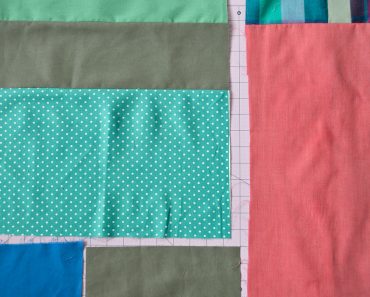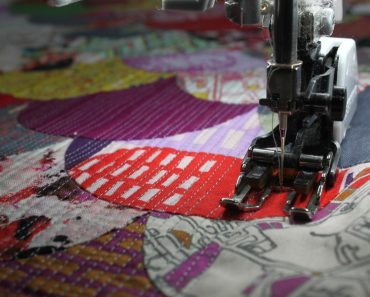Whether you’re an experienced free motion quilter or a beginner, the appropriate machine makes all the difference.
While a regular sewing machine may be used for quilting (after all, it’s a sewing machine), there are distinct differences between the two. A quilting machine has various attachments and capabilities that set it apart from a regular sewing machine.

1) Workspace
The amount of workroom on a sewing machine and a quilting machine is one of the most apparent distinctions between the two.
The throat is the width of the machine, which is determined by the length of the machine – the longer the machine, the bigger the work area.
A huge table with plenty of workspace/throat is more of a luxury than a requirement for basic sewing requirements and simple home décor tasks. However, the work area becomes crucial when working on bulky projects like quilts, therefore most quilting machines have a considerably greater work area.
2) Extension Table
An extension table will provide you additional working area on your machine if you want even more room to work on your quilt.
The extra work surface is tailored to fit securely against your sewing machine and is ideal for machine quilting and other tasks like binding.
The Extension Table is included with most machines in our quilting collection, but it’s also available as an optional option within the Janome genuine parts and accessories lineup.
3) Janome AcuFeed™ System
Have you ever had your sewing machine do a great job of stitching things from the top down, but when you turn it over, there’s bunching or puckering? This isn’t uncommon among quilters who frequently deal with multiple layers and hefty cloth.
The exclusive AcuFeedTM System from Janome allows you to sew with perfect precision from both the top and bottom, thanks to its unique design that moves layers of your work together under the needle. This function is ideal for piecing, hemmings, quilting, and any other type of sewing requiring exact control.
The AcuFeedTM System is compatible with the following machines: MC15000 Quilt Maker, MC15000, MC14000, MC12000, MC9400QCP, MC8900QCP, and Skyline S9.
4) Foot Option: Quarter Inch Foot
A quarter-inch seam allowance is optimal when machine piecing a quilt top. The quarter-inch piecing foot aids in the attainment of accurate quilting while also being utilized for projects with a restricted seam allowance.
This foot is standard on a number of Janome machines, but it is also available as an optional part in the genuine parts and accessories Janome collection. Also, there’s an AcuFeed Quarter Inch Foot for sale.

5) Foot Option: Darning or Free-Motion Foot
The free motion or darning foot is the ideal foot for free-motion quilting.
This foot protects your fingers while you move the cloth freely under the needle and ensures proper stitch formation, skipped stitches and puckering. It’s especially useful for individuals who are learning how to free-hand quilt. The open toe version offers excellent visibility of stitches and is particularly popular among quilters. Set your needle to the left needle position to get optimum results when free motioning.
Many machines in our quilting collection include this foot, but it is also available as an optional component of the Janome genuine parts and accessories range.
6) Walking Foot as an Option (also known as Even Feed Foot)
If your machine does not have the AcuFeedTM System, don’t worry; let the Walking Foot come to your rescue.
The walking foot is the second pair of feed dogs for the top of your project to assist you to feed through numerous layers, hefty fabrics, and slippery materials. It’s also fantastic for quilting in straight lines!
The Janome PQ2062HPC, for example, comes with this foot; however, it is also available as an optional component in the Janome genuine parts and accessories line.
7) Number of Stitches
Decorative stitches aren’t likely to be your preferred quilting stitch, but they might be the one that transforms your quilt from, “That’s nice,” to “Wow! You created that?”
Quilting with decorative stitching is a fantastic method to liven up the colour and texture of your quilt, especially along a border. You may also quilt your quilt sandwich using decorative stitching.
Over 200 built-in stitches are available on some of our quilting machines, including the MC15000 Quilt Maker, MC14000, and MC9400QCP.
8) Sewing Speed & Stability
If you’re a serious quilter or work in the field, you should seriously consider investing in a high-speed machine.
The MC6700P, MC6600, 1600P-QC, MC15000 Quilt Maker, MC14000, and MC9400QCP are some of our fastest machines on the market and can process projects at speeds of up to 1600 SPM.
These machines can sew at such high speeds that the machines themselves are designed to be strong and able to endure the motor’s rapid pace. They include features like a big flatbed and a wide workspace, all of which are useful in a quilting machine.
From the inexperienced seamstress to the expert sewer, there’s a sewing machine for everyone. Discover Janome’s wide selection of innovative goods, including budget-friendly options with intuitive features to fit every budget and skill level. Visit an authorized Janome retailer now to discover more.


